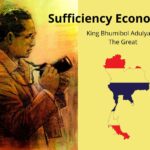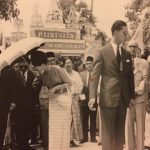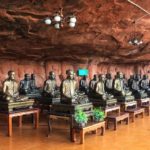
The Royal Ploughing Ceremony in Thailand – A History
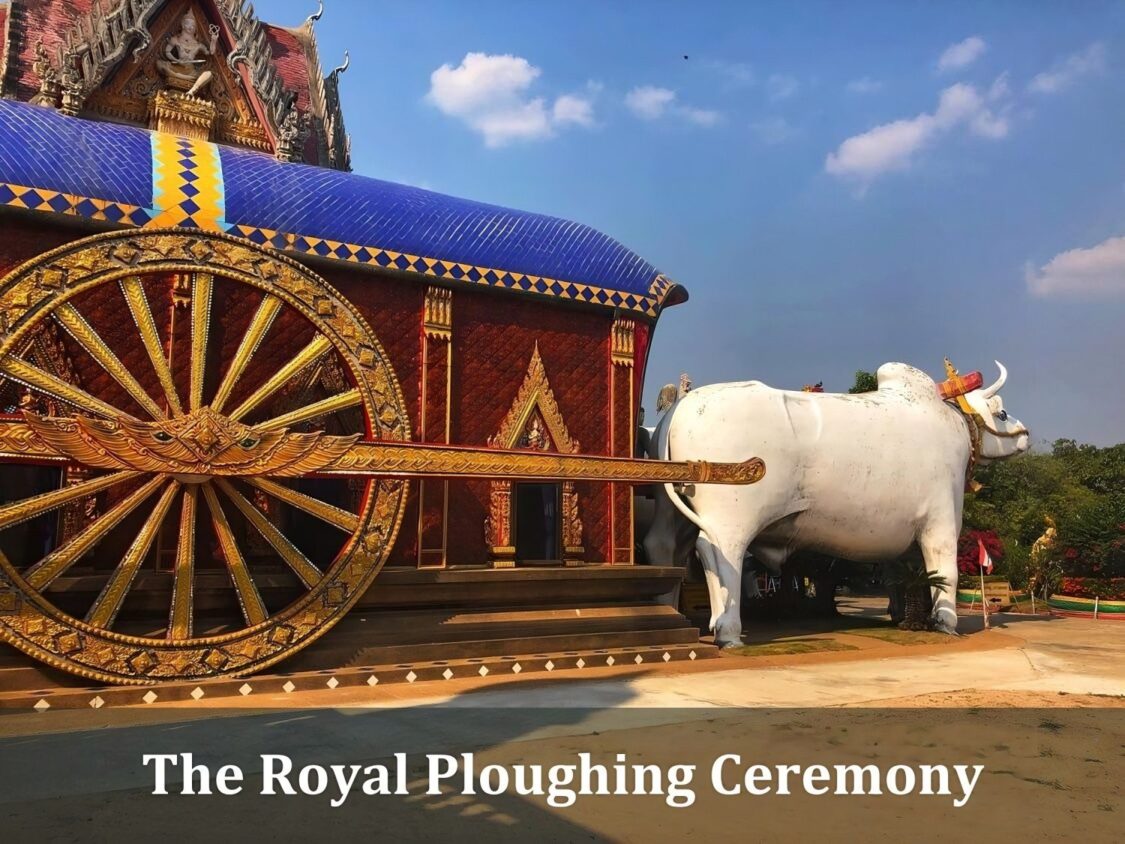
The Royal Ploughing Ceremony, known in Thai as “Raek Na Khwan,” is an ancient rite observed in Thailand that marks the traditional beginning of the rice-growing season and accompanying rains.
The phrase “Raek Na Khwan” (แรกนาขวัญ) translates to “The First Field of Khwan” — Khwan being a life sustaining spirit that is said to exist within all Thais. The ceremony thus honors the “khwan” of the Kingdom’s farmers and the life giving spirit of the land.
The origins of this tradition can be traced back to Hindu rituals and the Brahmin traditions of ancient India, which were later incorporated into the local customs of Thailand and other countries in Southeast Asia.
The Royal Ploughing Ceremony in Thailand is also referred to as “Wan Peut Mongkhon” (วันพืชมงคล), which means “Day of the Auspicious Plant”. It actually is composed of two separate ceremonies.
The first is a grain donation ceremony, which is held at Wat Phra Sri Rattana Satsadaram — more famously known as Wat Phra Kaew or The Temple of the Emerald Buddha.
This is a Buddhist ceremony where the King of Thailand, accompanied by a retinue of Thai monks, prays for an abundance of crops, and blesses white sacks of rice grains and sesame seeds which have been donated by provincial governors of Thailand.
The second is a Bhramin ceremony where a small tract of land is ploughed inside Sanam Luang (สนามหลวง), an open field and park located in front of the Grand Palace in Bangkok. Sacred oxen, led by traditionally dressed Thai farmers, pull a decorative plough, and as they move, rice seeds are sown.
After the ploughing, two divination rituals are conducted which predict the success of this year’s crops, economy, and rainfall.
The oxen that ploughed the field are offered a variety of foods, including rice, corn, sesame seeds, fresh-cut grass, water, and rice whisky. The choices made by the oxen are believed to predict the following:
Rice or corn predicts that rice and fruit will be plentiful.
Nuts or sesame foretell that fruit and food will be plentiful.
Water or grass foretell that the water supply will be abundant. Grains, crops, food, and vegetables will be plentiful.
Liquor predicts that transportation will be more convenient. Trade with foreign countries will improve, making the economy prosper.
There is also a cloth selection ritual where the abundance of rainfall is predicted for the rainy season.
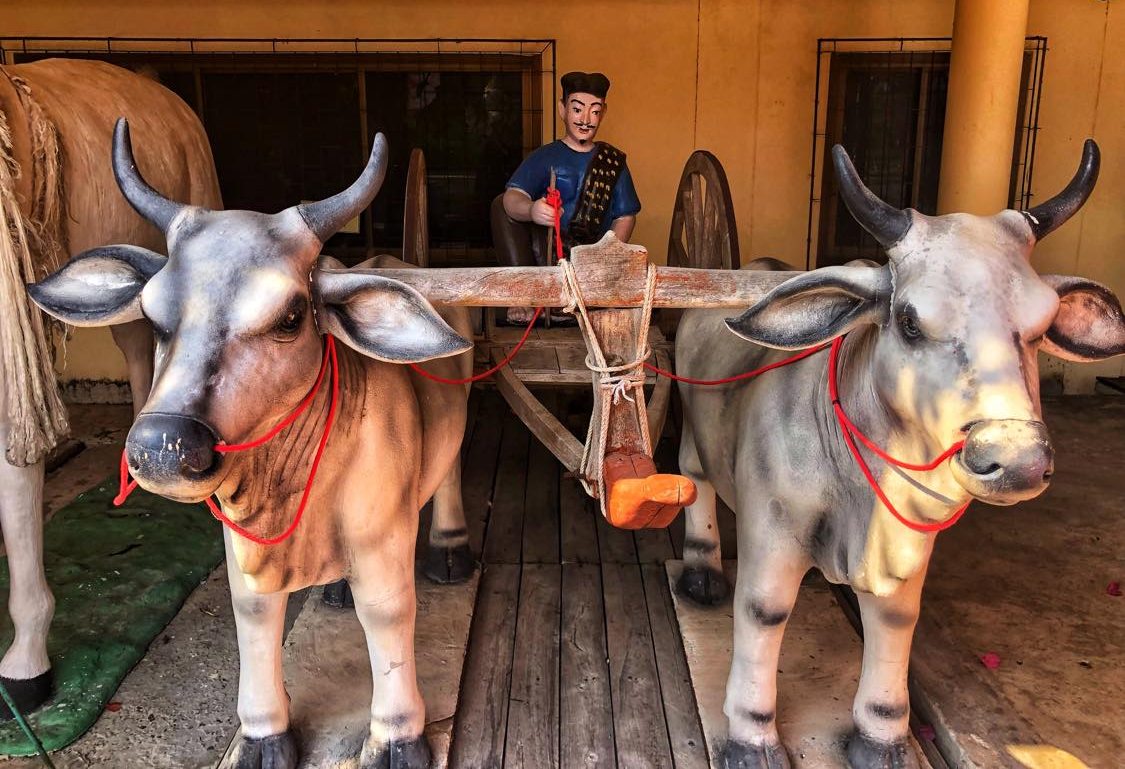
History of the Ceremony in Thailand
The Royal Ploughing Ceremony has been practiced in Thailand (Siam) since the Sukhothai period (1238-1438), but it became more formally recognized and regularly celebrated during the Ayutthaya period (1350-1767).
The King of Thailand, or an appointed royal family member, presides over the event, which underscores the monarch’s role as a caretaker of agricultural prosperity and the spiritual well-being of the country.
King Chulalongkorn (1853 – 1910) discussed the importance of the ceremony, expressing sympathy for the farmers and the weather uncertainties they struggle under. He viewed the ceremony as symbolic of the only way one can persevere — that is, through “honesty, faith, and prayer” (จะได้เป็นที่มั่นอกมั่นใจโดยอาศัยคำอธิษฐานเอาความสัตย์เป็นที่ตั้งบ้าง ).
During the reign of King Bhumibol the Great (1946 – 2016), the Royal Ploughing Ceremony eventually became not only an important ceremonial event but also a reflection of His Majesty’s “Sufficiency Economy” philosophy, which in Thai is referred to as “Sàyt-tà-gìt Por-piang” (เศรษฐกิจพอเพียง).
The King’s philosophy emphasizes moderation, responsible consumption, and resilience, which are the keys to sustainable development. The Royal Ploughing Ceremony was viewed as a way to reinforce His Majesty’s philosophy and the critical role agriculture plays in Thailand’s economy and the well-being of its people, aligning traditional practices with modern needs and sustainability.
During the latter part of his reign, HM King Bhumibol’s son (Crown Prince Maha Vajiralongkorn) often led the ceremony, and has continued to do so after assuming the Thai throne, accompanied by his wife Queen Suthida.
When is Thailand’s Royal Ploughing Ceremony Held?
The specific date of the ceremony each year is determined by royal astrologers. It typically occurs in May and corresponds with the beginning of the rainy season, which is crucial for rice cultivation. This year (2024) Thailand’s Royal Ploughing Ceremony will be held on May 10th.
- Thai Inhalers: Boost Your Memory & Recall with “Ya Dom” - May 18, 2024
- Phra Khun Paen: Thai Love Spells & Amulets - May 17, 2024
- Visakha Bucha Day in Thailand (2024) - May 16, 2024

